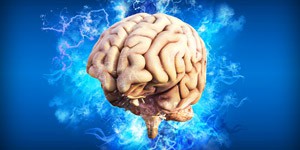By José Carlos Bouso

José Carlos Bouso is a clinical psychologist and a doctor of pharmacology. His areas of interest are psychopharmacology and the therapeutic properties of entactogens, psychedelics and cannabis. He has conducted therapeutic research with MDMA, pharmacological research with several substances of plant and synthetic origin and has also performed studies on the long-term neuropsychological effects of substances such as cannabis, ayahuasca and cocaine. He is author of the book "Qué son las drogas de síntesis" [What are synthetic drugs?], and co-author of “¿La marihuana como medicamento? Los usos médicos y terapéuticos del cannabis y los cannabinoides" [Marihuana as medicine? The medical and therapeutic uses of cannabis and cannabinoids] and "Ayahuasca y salud" [Ayahuasca and health]. His research has been published in scientific journals. He is currently the director of scientific projects at Fundación ICEERS.
Prevalence of drug use and health expenditure
The third-leading cause of death worldwide is due to drugs.1 In countries such as the United States, it is the leading cause, mainly associated with the prescription of opioid and anxiolytic analgesics.2
Although drugs are essential to cure numerous diseases and to maintain the best possible quality of life in patients with chronic diseases, they are not free from toxicity. According to some experts, only one third of prescription drugs have some effective therapeutic action, another third is poorly tolerated causing damage, or is poorly prescribed, and the other third is ineffective.3 About 500 people in the European Union die every day due to the side effects of drugs, while some 75 daily deaths are due to traffic accidents.4
Mortality associated with drug use is related to the specific toxicity of each specific drug and to the toxicity accumulation, which ends up causing long-term damage. Polypharmacy is another significant cause of serious adverse reaction and death. The probability of suffering a clinically significant adverse effect increases by 50% when five drugs are being taken at once and 100% if seven are taken; 20% of them can lead to serious adverse effects.5
In 2015, the consumption of prescription drugs per inhabitant in Spain was 19.8 units, the average expenditure per prescription being 10.8 euros, assuming an average expenditure of 214 euros per inhabitant.6 In recent years, more and more scientific research has been published that concludes that in countries where there are medical cannabis programmes, patients reduce or replace the use of prescription drugs with the use of cannabis. Research agrees that the drugs most substituted by cannabis, or whose use is considerably reduced, are mainly analgesics (drugs to combat pain), anxiolytics (drugs to combat anxiety and to promote sleep) and antidepressants (drugs to improve mood). The consequences of these results not only have an impact on greater safety for patients, but also on lower pharmaceutical costs.
The pharmaceutical market exceeds profits from arms sales or telecommunications and it is estimated that for every dollar invested in manufacturing a drug, one thousand profit is obtained.7 In Spain, pharmaceutical spending exceeded 20 billion euros in 2018. It is the second-leading country in the world, after the United States, that consumes the most drugs, and its use of tranquilisers, hypnotics and antidepressants has increased by 200% during the last decade.8 In relation to psychotropic drugs, the prevalence of non-medically prescribed consumption in the last year is 2.4% for stimulants, 6.8% for opioids and 9.2% for hypnosedatives (anxiolytics).9 According to the latest National Drug Plan surveys (in Spanish, PNSD), hypnosedatives, taken with or without a prescription, are the fourth most used drug in Spain below alcohol, tobacco and cannabis in the 14-18 year-old population and the third most used, below alcohol and tobacco but above cannabis, in the general population (15-65 years).10 In Spain, the 10 best-selling drugs in 2018 include five analgesics belonging to the family of so-called non-steroidal analgesics and anti-inflammatory drugs (or NSAIDs), with four of them in top place in the following order: metamisol (Nolotil), aspirin, Enantyum (dexketoprofen) and paracetamol, the fifth being ibuprofen, which ranks eighth. Two anxiolytics (hypnotic) are in the ninth and tenth positions: Tranquimazin (alprazolam) and Orfidal (lorazepam), respectively.11 With regard to gender, one in four women in Spain consume daily analgesics or anxiolytics,12 which may be reflecting not so much an originally medical issue, but more gender roles and physical load within and outside of the workplace. In terms of antidepressants, Spain is the tenth "power" in the world, with a chilling 7.5% of Spaniards taking a defined daily dose, which is equivalent to 26 daily doses per thousand inhabitants.13 Due to the medical conditions for which these groups of drugs are usually prescribed, such as chronic pain, anxiety disorders and mood disorders, such as depression, which tends to chronicity, especially if as the sole strategy of the approach is pharmacological, its use in many cases is associated with long-term consumption and often for life.
None of these three groups of drugs is exempt from long-term problems. NSAIDs are related to increased likelihood of heart attack14 and digestive bleeding, among other serious adverse reactions.15 In Spain, 1.5% of hospital admissions are due to intestinal problems derived from the use of NSAIDs, with 5% mortality rate, the majority in people over 60 years. In the population that uses NSAIDs, the maximum mortality rate per million inhabitants and per year is 153.4. In relative figures, there are about 23 deaths per million inhabitants and the equivalent of 26 deaths per million prescriptions.16 With regard to hypnotics, the most commonly used belong to the benzodiazepine group. Although benzodiazepines are very safe and effective drugs in the acute treatment of anxiety and insomnia symptoms, they have a high power to produce physical dependence and their continued use is associated with a greater likelihood of suffering long-term dementia in advanced adulthood.17 Finally, research that concludes that antidepressants are not only not more clinically effective than placebo,18 they also produce long-term negative effects, mainly severe withdrawal syndrome19 and increased likelihood of committing suicide.20 Again, the control of their toxicity and the efficacy of all these drugs depend not only on their pharmacological effects, but on adequate prescription based on a rational clinical judgment.
The role of cannabis in reducing drug use
More and more studies are being published in countries that have medical cannabis programmes or that have legalised cannabis for medical purposes where there is consistently reduced use of psychoactive drugs and analgesics among people who use cannabis for medical purposes. In a study published in 2011 based on a survey of more than 1,700 patients from nine clinics in California, it was found that up to 50% of respondents used cannabis for medical purposes.21 The most consistent results have been seen in patients with chronic pain, a condition for which cannabis indicates a high level of evidence as to its effectiveness.22,23. All chronic illnesses entail anxiety and benzodiazepine prescription is common, the reduction of which has also been observed in patients using cannabis.24 A case of special gravity is the use of opioids, which is associated with a high mortality rate, especially in the United States and Canada. Numerous studies have shown lower use of opioids in patients who use cannabis25, but also of anxiolytics and antidepressants.26 There are also studies that show that in the US states where there are laws on medical cannabis, deaths from opioid overdose (an epidemic in the United States that kills 20 people every day) are statistically lower than in the states where there are no laws about it.27,28. A study carried out by our group, pending publication, in which the health status and cannabis consumption patterns of a sample of 52 therapeutic users who were interviewed in Catalonia with chronic illnesses of different natures, were evaluated using indicators extracted from the Catalonia Health Survey (ESCA), 88% reported having reduced or even eliminated some of the drugs they used to treat their symptoms by replacing them with cannabis. Opioid drugs formed the largest group of drugs totally or partially substituted by cannabis; 24% of the total. They were followed by nonsteroidal anti-inflammatory drugs (19%), antidepressant drugs (19%), anxiolytics (14%), antiepileptic drugs (10%) and other drugs (14%). They also reported a lower number of emergency visits and hospitalisations after starting cannabis use. Finally, a recent study in the United States analysing the amount of prescriptions prescribed in the Medicaid system (a public insurance system financed by the government for economically vulnerable people) between 2007 and 2014, found a number of prescriptions significantly lower in those states that have medical cannabis laws, the authors of the report estimate a saving of about one billion dollars for the state.29
Conclusion
Although cannabis use is traditionally associated with generating dependence and as a gateway to more dangerous drugs, more and more studies are going in the opposite direction, at least among patients with chronic diseases that substitute or reduce prescription drugs, mainly analgesics, anxiolytics and antidepressants. Cannabis is not without problems if the prescription is not accompanied by medical follow-up, although these problems are far from equated with the side effects associated with the aforementioned prescription drugs. Reduced use of these drugs is not only associated with lower drug poisoning, but also lower pharmaceutical cost and public health expenditure. The gradual implementation of medical cannabis programmes internationally will enable confirmation in a few years whether the preliminary results of the studies published to date, some of them referred to here, are confirmed.
References
1. http://www.migueljara.com/2014/12/08/los-medicamentos-son-la-tercera-causa-de-muerte/
9. https://bmcpsychiatry.biomedcentral.com/articles/10.1186/s12888-016-0909-3
12. DKV Salud y bienestar. 2018. V Estudio de hábitos de vida saludable y bienestar en las mujeres. https://dkvseguros.com/salud/instituto/estudio-mujer/v
14. https://www.bmj.com/content/357/bmj.j1909
15. https://www.mdsaude.com/es/reumatologia-es/antiinflamatorios-no-esteroideos/
17. https://www.ncbi.nlm.nih.gov/pubmed/31802436
18. https://www.ncbi.nlm.nih.gov/pmc/articles/PMC5299662/
19. https://www.ncbi.nlm.nih.gov/pubmed/30292574
20. https://www.ncbi.nlm.nih.gov/pubmed/31234169
21. https://www.ncbi.nlm.nih.gov/pubmed/21858958
22. https://www.ncbi.nlm.nih.gov/pubmed/29797104
23. https://www.ncbi.nlm.nih.gov/pubmed/27001005/
24. https://www.ncbi.nlm.nih.gov/pmc/articles/PMC6757237/
25. https://www.ncbi.nlm.nih.gov/pubmed/28189912
26. https://www.ncbi.nlm.nih.gov/pubmed/28372506
27. https://www.ncbi.nlm.nih.gov/pubmed/29610827
28. https://onlinelibrary.wiley.com/doi/abs/10.1111/ecin.12819


